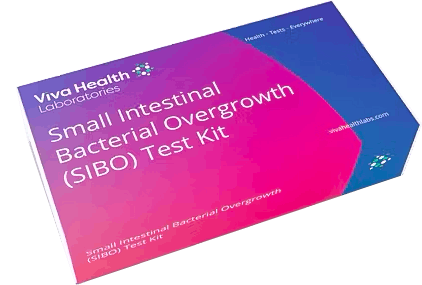What causes heartburn?
Heartburn is typically caused by GERD. About 20% of the population will experience heartburn regularly.
Usually, the valve at the bottom of the oesophagus (Lower Oesophageal Sphincter, LOS) ensures that acid and other substances such as Pepsin and Bile in the stomach do not reflux up into the oesophagus. In GERD this valve fails, and reflux of these substances will irritate the oesophagus causing heartburn. Many but not all patients with GERD will have a hiatus hernia which contributes to LOS failure. Often patients with hiatus hernias will experience worsening of their symptoms at night when lying flat as gravity no longer helps to keep stomach contents where it belongs.
What can worsen heartburn caused by GERD?
- Large meals and eating before going to bed
- Certain foods and drinks, such as spicy foods, chocolate, caffeine, and alcohol, can trigger heartburn.
- Lifestyle factors like smoking, obesity, and lying down after eating increase the likelihood of heartburn.
- Some medications, including anti-inflammatory drugs, blood pressure medication, hormone replacement therapy (HRT) and certain muscle relaxants can all cause or worsen heartburn.
Whilst heartburn is most frequently caused by GERD other causes should always be considered. It can be difficult to confirm the cause without trials of medication and often diagnostic tests. Some causes are related to other conditions affecting the oesophagus and some to other organs.
Other causes of heartburn;
- Gallstones
- Heart conditions including ischaemic heart disease
- Non-reflux oesophagitis caused by eosinophilic oesophagitis, drugs, infections
- Functional heartburn/oesophageal hypersensitivity
- Cancer
- Belching. This can be functional or caused by conditions affecting the stomach or gut including Small Intestinal Bacterial Overgrowth (SIBO) and H. Pylori
How is heartburn diagnosed?
Heartburn is diagnosed initially by a clinician listening to a patient’s “history”. Once other causes such as gallstones have been excluded and GERD is thought to be responsible a course of medical treatment, for instance with an anti-acid medication to evaluate response, may be recommended. Further tests to evaluate the oesophagus may also be indicated. These include;
- Gastroscopy: Otherwise known as upper GI endoscopy this involves inserting an endoscope through the mouth or nose into the oesophagus and then through the stomach and duodenum (together known as the “foregut”). The endoscope has a high definition camera enabling the operator to look for structural abnormalities such as hiatus hernias. They will also evaluate the lining of the foregut, for instance identifying oesophagitis, Barrett’s oesophagus and ulcers. If necessary samples of tissue (biopsies) can be taken for analysis. The examination can be performed with local anaesthetic spray, intra-venous sedation or under general anaesthetic.
- 24 hour catheter reflux monitoring. A small tube (catheter) is inserted through the nose to the bottom of the oesophagus and measures reflux events usually over 24 hours at the bottom as well as the top of the oesophagus. It will also include a pH sensor in the stomach to ensure normal acid production. The catheter is attached to a recorder about the size of a mobile phone and patients can record when they experience symptoms allowing correlation between the two. These are known as “symptom associations”. pH testing assesses acidic/non acidic reflux events. Modern testing includes impedance which offers the advantage that it also distinguishes between liquid, solid and gas reflux events. So, for instance impedance can identify belching and its relationship with reflux.
- Oesophageal pH capsule reflux test. The Bravo test involves attaching a tiny capsule during a gastroscopy onto the lining of the oesophagus just above the stomach. This records acid reflux over a period of 48-96 hours. Instead of a catheter it sends the data wirelessly to a recorder and falls off after the test is complete. The procedure is usually performed under conscious sedation.
- Small Intestinal Bacterial Overgrowth (SIBO) breath test. This is a simple test usually performed at home in which a sugary liquid made with either glucose or lactulose is first drunk. Over the next two hours samples of breath are then taken by breathing into small bottles. These are then returned to the laboratory where the concentration of hydrogen and methane gases are measured. These gases are not produced by human cells but are released from micro-organisms in the gut during their metabolism of carbohydrates including glucose and lactulose. The pattern of their concentration in the samples taken during the test can be diagnostic of abnormal SIBO and Intestinal Methanogenic Overgrowth (IMO).
What are the treatments for heartburn?
Reaching the right diagnosis is key to planning treatment. It should not be assumed that heartburn is always caused by reflux or is a sign of reflux. This assumption can condemn patients to the wrong treatments, such as long-term PPIs. Heartburn treatment focuses on reducing symptoms and treating complications of the underlying cause such as Barrett's Oesophagus. When caused by GERD an escalating strategy depending on effectiveness is usually recommended.
Lifestyle changes;
- Dietary changes such as eating smaller meals, avoiding trigger foods, eating earlier in the day
- Losing weight
- Stopping smoking
- Elevating the head of the bed at night
Medications;
- Alginates such as Gaviscon
- Simple anti-acids such as sodium bicarbonate
- H2 blockers such as Famotidine and Nizatadine
- Proton pump inhibitors (PPIs) such as Omeprazole and Nexium
- Others including Baclofen
Anti-reflux procedures;
- TIF
- Laparoscopic fundoplication
- Laparoscopic LINX
- Laparoscopic RefluxStop


